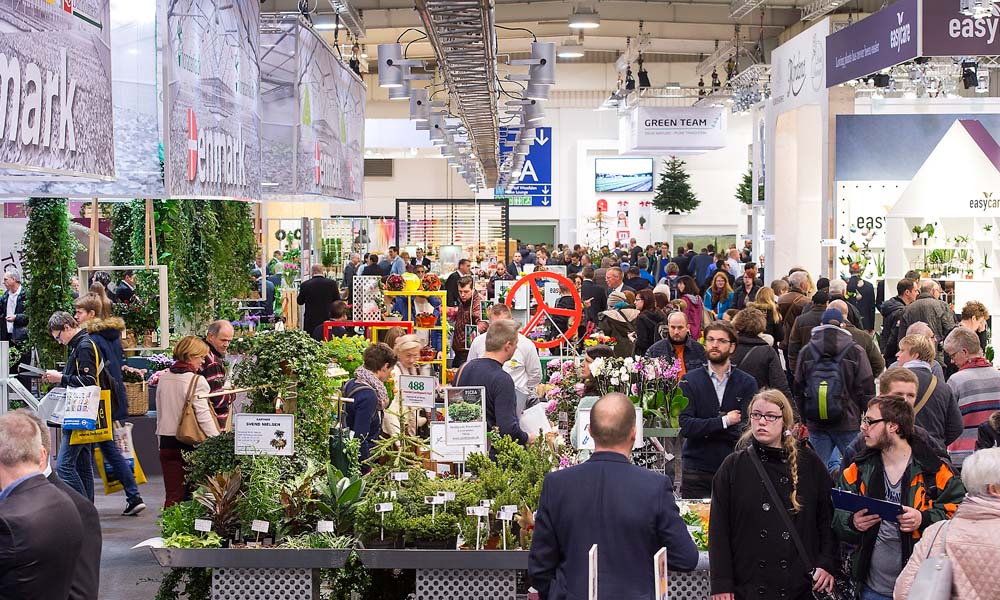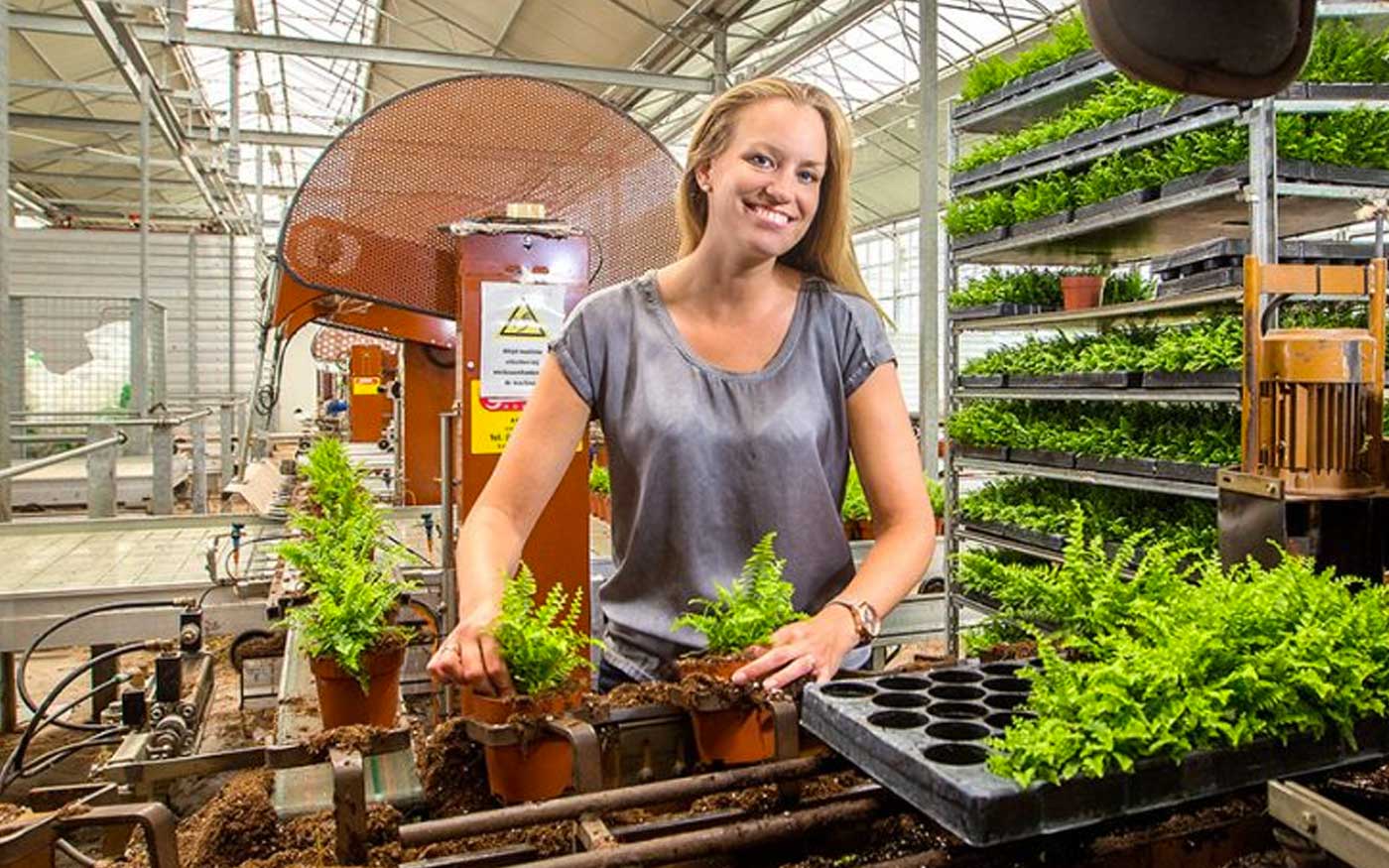Sensors that map all the processes in the greenhouse. Drones that perform tasks in the right place in response to clear commands. New technologies are firing the imagination and getting us thinking about how we can improve our processes even further. The opportunities are endless – as long as the data is easy to keep track of.
Controlling the climate, supplying the right nutrients in exactly the right quantities, detecting pests and diseases before the plants get sick, and applying pesticides topically: things will be done very differently in the future from the way they are done today. Conventional measuring equipment at high-tech nurseries are set to be enhanced with a whole new generation of sensors and smart applications. Not only are they cheaper, they can sometimes do more too. The possibilities are almost endless and are igniting the creativity of users and developers alike. Niels Lauwers of 30HMz in Amsterdam and Marinus Luiten from Dutch horticultural suppliers Horticoop share some of the things they are working on.
Wireless sensors
“The theory behind our product is that you can connect any device with an IP address and check it wirelessly in real time,” Lauwers explains. Operating from its base at a business centre in the Port of Amsterdam, 30MHz specialises in sensor technology and helps businesses monitor and optimise their production processes with wireless sensor systems and an online dashboard.
This technology is very much on the up at the moment. The company is already almost bursting out of its premises and has grown from three pioneers to a workforce of 22 in just two years. They spend much of their time puzzling over issues for which smart sensors and measuring equipment could provide an answer. The issues they work on are many and varied, ranging from managing flexible workplaces and their occupancy rates efficiently to monitoring ventilation systems in tunnels and checking mousetraps remotely.
The greenhouse horticulture sector is also gradually embracing the equipment these tech whizzes are developing. Among other things, they have come up with sensors that monitor cold stores for bulbs, protect orchids against ethylene damage, and track the temperature of sweet pepper fruits.
Digital environment
The company looks for solutions to problems brought to them by customers. “There are so many sensor components available all over the world. We track them down and build them into handy tools,” Lauwers says. He shows us a waterproof plastic box with a flexible arm and an infrared sensor that can measure the temperature of a leaf or fruit. Instruments like these have their own power supply in the form of a battery. The data is read through a mesh network, so no wiring is needed. This makes them ultra-flexible. The measurements are stored in the cloud and can be retrieved from anywhere in the world.
“The cloud” – that’s a term that pops up regularly. The core activity of sister company 9Apps is keeping the digital environment secure. Its cloud engineers specialise in carrying out software checks to protect stored data. The wireless sensors fit in perfectly with this: the stable cloud structure can cope with an estimated half a million sensors without processes “falling out of the sky”.
Lauwers knows that a lot of techies have reservations about wireless sensors, fearing that network connectivity could be less reliable. He doesn’t agree at all. “These systems are so good nowadays that they are at least as reliable in terms of data transfer as wired connections. What’s more, they can be used in places where you can’t install wiring.”
Unique systems
To control the sensors and collect the data, the company developed the Zensie system. The user can analyse the collected data on a dashboard, where it is displayed in overviews and graphs. New sensors are very easy to add to the system. And if anything goes wrong in the process, the user receives a text message or e-mail.
Every system is unique; there are no standard off-the-shelf systems available. The company talks to people looking for a solution to a specific problem. “We want customers to think about what they want to measure. Then we sit down with them to work out a solution,” Lauwers explains. Next the developers source the sensor components and design a housing for the equipment that can stand up to environmental influences. They outsource the manufacturing of the equipment to another company but they build the network themselves. There is no lack of interest, as Lauwers has noticed from the attention and reactions he gets at trade fairs.
Socket strip
Of an entirely different magnitude is a development by horticultural suppliers Horticoop. This company has recognised that not only are technological developments in horticulture happening at breakneck speed, but mobile phone apps are also playing an increasingly important role. There are already so many apps available, and a logical step would be to bring them all together on a platform.
Under the brand name HortiCrop, the company is developing a central platform for collecting data from multiple sources, whether from fixed measurement points, existing systems, mobile sensors and apps, or external information. The platform contains several modules subdivided into five areas: fertilisation, crop protection, irrigation, growth and climate/disease pressure. Growers are presented with a dashboard on which all the data is clearly displayed, enabling them, or their advisers, to make decisions as to which crop or sales strategy to apply.
“You need to think of it as a socket strip on which everything comes together,” Luiten explains. “We think it’s important to have all the communication taking place using the standard EDI (Electronic Data Interchange) protocol, with all the modules fitting onto one baseplate, like Lego bricks. HortiCrop is that baseplate.”
Location detection
A platform or dashboard is more than just a place where all the measurements are brought together. An important aspect is collating the measurements in terms of time and location. The latter is a particular challenge.
“We are seeing GPS technology develop rapidly, particularly in agriculture and open field horticulture,” Marinus Luiten says. “We would also like to use this technology in greenhouses, but it’s not easy.” The cage construction of the greenhouse impacts on accuracy, so a different method is needed to enable the exact location inside a greenhouse to be pinpointed. What is more, GPS is a two-dimensional grid, whereas in a greenhouse what you want is three-dimensional location detection. For this reason, you can’t really compare outdoor and greenhouse cultivation.
Three-dimensional location detection opens up new opportunities. If you can precisely identify where action needs to be taken using sensors or manual notes on your mobile phone, you can focus on that, for example by applying extra biological controls or making adjustments. This can be done manually, but it could also be done with specially designed equipment or even drones.
Initial pilots
Luiten: “We are seeing a lot of developments in this field, so horticulturalists need structure and a clear overview.” The fact that the company wants to expand in this area is both progressive and logical. And a supplier that collaborates with many different parties is perfectly placed to take on this role. “It can also get us a foothold in the market,” he says.
The process is still at an early stage. The first pilots are already under way, such as monitoring leaf growth in Phalaenopsis – a time-consuming, manual process that could be done a lot more efficiently. But the fact that the company is already going public with these plans has to do with the need for transparency. All opinions and ideas are welcome, and the company is also looking to cooperate with other partners. “The revenue model is not yet a priority for us. We want to offer our customers this service for nothing soon. The last thing we want is to become a data broker,” Luiten concludes.
Text: Pieternel van Velden, images: Gert Janssen, Pieternel van Velden and Jan van Staalduinen












